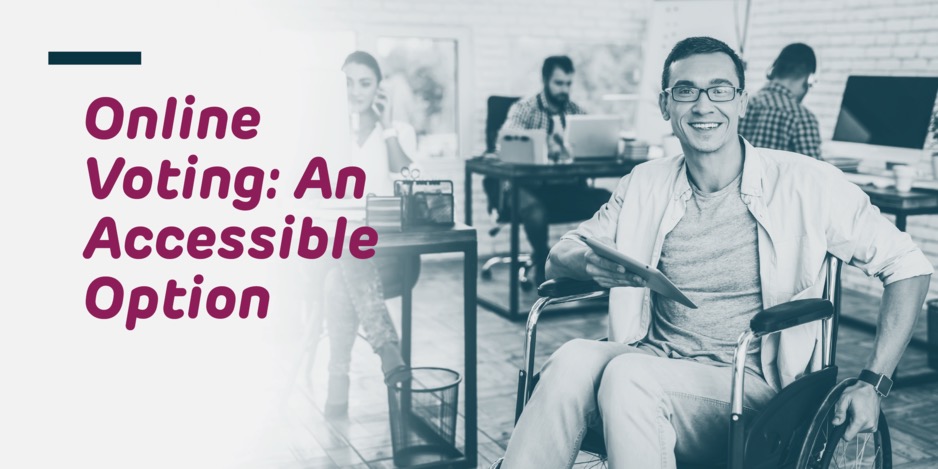In democracies where everyone is entitled to the right to vote, it can still be remarkably difficult for voters with disabilities to cast their ballots. A 2017 survey by the U.S. Government Accountability Office, for example, found that 60% of polling stations had at least one potential impediment for disabled voters. Meanwhile, a 2019 study from the European Election-Watch.EU noted that voting materials designed specifically to aid persons with disabilities in voting independently “have been assessed as scarce or insufficient in a number of countries.”

One primary issue for voters with disabilities is a lack of accessibility. This means that there are specific hurdles that can making voting difficult or impossible. These might include a lack of accessible parking or wheelchair access at polling stations, and voting materials that are difficult to use.
Even when there are certain accessibility features in place, voters with disabilities often still face challenges in voting independently and privately. For instance, voters with low vision are often able to vote with the assistance of a family member or chosen acquaintance. While this helps increase election accessibility for these voters, it doesn’t allow them privacy in their choices and can possibly hamper their ability to exercise the right to vote freely. More importantly, it doesn’t offer an equal voting experience as that had by non-disabled voters.
Increasing Accessibility with Online Voting
Implementing an Online Voting solution is one of the most effective ways to increase election accessibility. This is because while voting machines equipped with accessible technology, for example, may be seen as a solution to the lack of independence and privacy disabled voters are often faced with, they do not effectively address the hurdles that might make a polling station physically inaccessible in the first place. Likewise, while postal voting might seem to be a solution to inaccessible polling locations, it doesn’t necessarily help disabled voters vote more independently.
Online voting, on the other hand, can address both hurdles.
In an election with online voting, voters can access the voting portal from their own devices, no matter where they are. This means that disabled voters do not have to struggle with in-person polling stations that they can’t easily access. And since voters are using their own devices, they can also use any assistive technology that they may already rely on, like screen readers or magnifiers and alternative keyboards and mouses.
Accessibility & Convenience
When thinking about election accessibility, we can also consider other groups of people who face challenges trying to vote through conventional methods.
Voters living abroad or serving in the military, for example, can often find it difficult to participate in elections. Throughout 2020, for instance, only 7.8% of eligible U.S. voters living outside the country turned out for elections, making stateside voters 10 times more likely to vote than abroad voters. The Federal Voting Assistance Program attributes at least 40% of the difference in turnout between stateside and abroad voters to obstacles that prevented overseas citizens who wanted to vote from doing so.

Meanwhile, domestic voters who live in remote areas or who cannot afford to take the time out of their day to go to a polling station, stand in line, and cast a ballot also face challenges participating in elections.
With these groups, we can think about election accessibility as convenience. In other words, while these voters don’t necessarily face any physical hurdles to the voting process, the amount of effort and resources they must put into casting their ballots is greater than that of other voters, thereby making voting increasingly inconvenient.
Online voting can also help increase election convenience in the same ways that it boosts accessibility. Giving voters the option to cast their ballots at a convenient time, from a convenient location, and with their own personal devices means that the voting process is, quite literally, at their fingertips.
Online voting has emerged as one of the most accessible and convenient voting methods, thanks to innovative and modern technologies. Of course, these solutions would not be effective at increasing participation if they weren’t also secure, transparent, and verifiable. To learn more about the security behind our online voting solutions, check out our Security Table of Online Voting.


